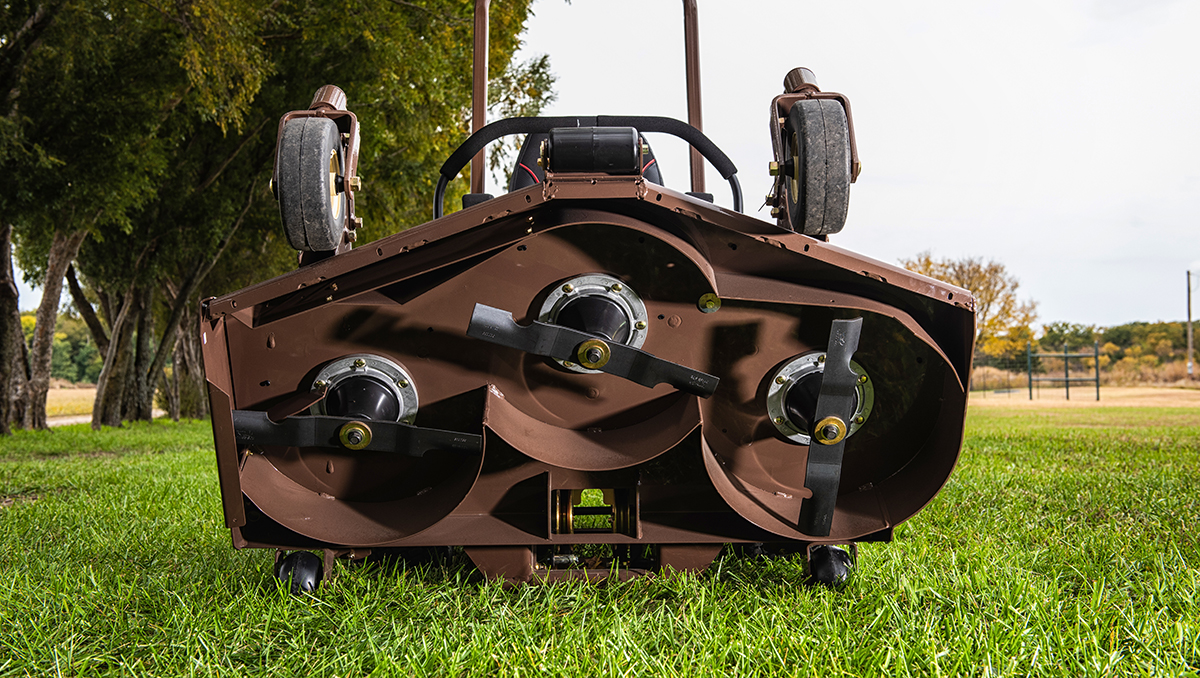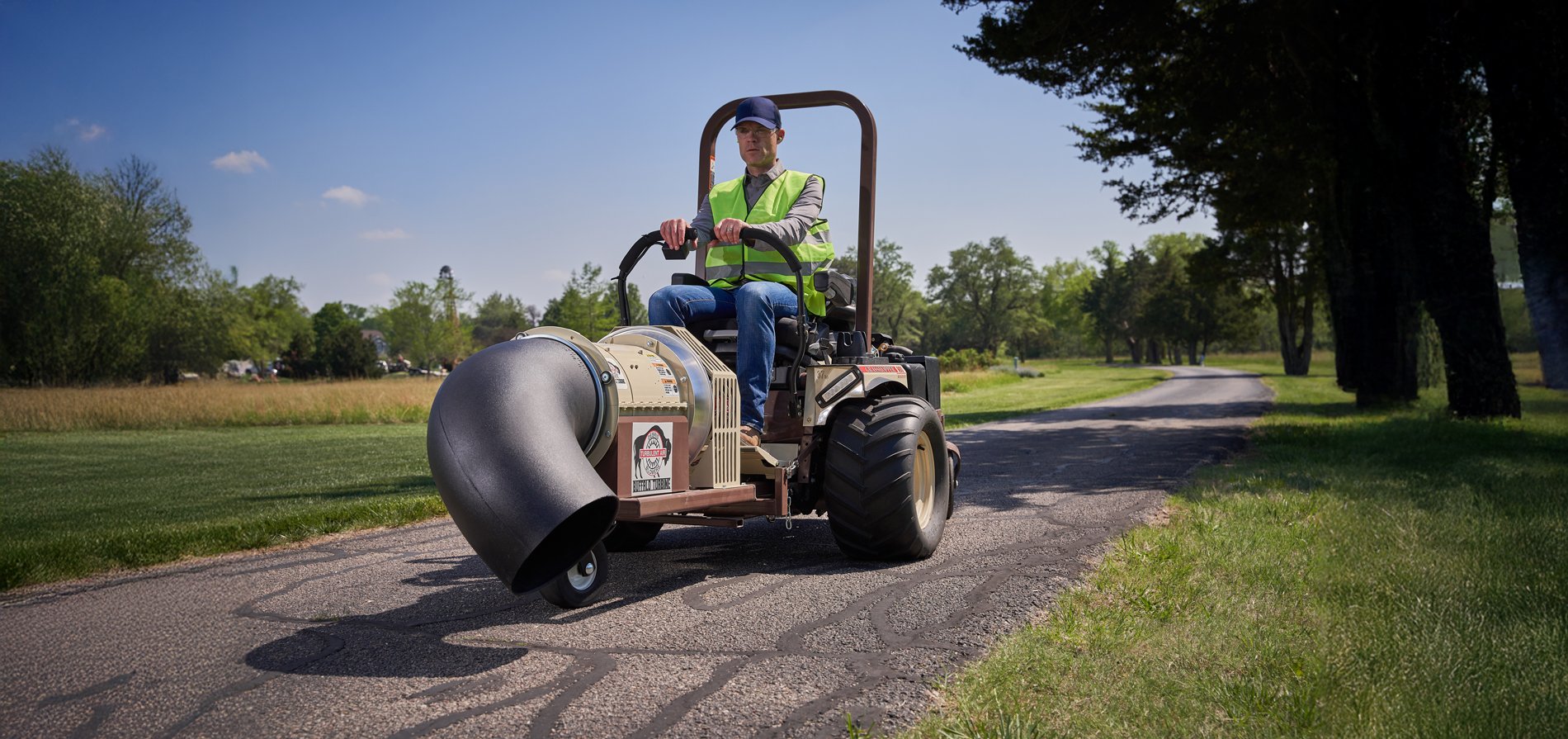A lot goes into maintaining a healthy, beautiful lawn. Two of the key ingredients, sunlight and soil temperature, can actually start working against you when they become overly abundant in the heart of summer.
Warm-season grasses that you find down South actually thrive in hot weather. But in the majority of the country where you’ll find cool-season grasses like bluegrass, ryegrass and fescue, too much heat can create a lot of lawn care challenges.
How Hot Is Too Hot?
When daytime temperatures get into the mid-70s, a cool-season grass’s energy production starts to slow down. At the same time, energy consumption starts to increase. By the time air temperatures climb into the mid-80s, the grass plant starts to enter into an energy-deficit mode. The longer this goes on and the hotter it gets, the weaker the plant gets—especially when high overnight temperatures deprive the grass of any chance to recover.
Turfgrass also takes a beating below ground during periods of prolonged heat. Root growth starts to suffer when the temperature climbs above 70°F. The hotter it gets from there, the weaker and shallower the root system can become. Toss in a prolonged stretch without rain, and you can really be fighting an uphill battle to keep your lawn looking nice.
Assuming you are still getting some rainfall during a heat wave, the grass will continue growing and need to be mowed. Following are some tips to help you safely and effectively keep your lawn looking neat during periods of extreme heat.
Don't Mow Too Short
Longer grass can handle heat better. Longer grass helps shade the soil and grass roots, while also helping prevent weed seeds from getting the sunlight they need to germinate. Longer grass also helps encourage deeper root growth, which helps the grass retain moisture better when the topsoil gets dried out. For cool-season grasses, keeping the length to roughly 3.5 to 4 inches during a heat wave is good practice.
Mow With Sharp Blades
Mowing with sharp blades is always important, but becomes even more essential during heat waves when grass is stressed. Dull blades can tear and damage grass. Damaged grass not only looks raggedy and pale, but also has a hard time retaining moisture. So, be sure to sharpen your blades every eight hours to maintain optimal sharpness and reduce stress on the turf.
Go Easy On The Lawn
Avoid mowing more often than you need. The main objectives are to maintain the grass to that longer length, and to remove no more than one-third of the grass during a single mowing.
When you aren’t running your mower across the lawn, give the grass a break. Minimizing foot traffic will help minimize the stress a lawn is forced to endure. In other words, prolonged heat waves aren’t the best times to set up the badminton net.
Water As Needed
If your heat wave is accompanied by a dry spell, you may need to consider a watering schedule—at least on the areas of the yard you want to keep looking really nice. Cool-season grasses can dry out pretty quickly, even when maintained to a longer length.
Chances are, you don’t have an in-ground irrigation system. If you’re concerned about your lawn turning brown or going dormant, you’ll need to set up your own sprinkler(s). Some watering tips include:
- Cool-season grasses need 1 to 1.5 inches of water per week
- Split that up between two or three watering sessions
- Water in the morning when it’s cooler so it doesn’t just evaporate away
- Avoid watering at night to limit the potential for fungal growth
Generally speaking, the typical lawn sprinkler will deliver 1/3 to 1/2 inch of water in 20-30 minutes. If you really want to be sure, you could set out a couple of cans or pails and measure how much water is in them after 20-30 minutes. Then you’ll know how long to let your sprinkler(s) run each time you water.
Take Care Of Yourself, Too
Extreme heat can be tough on the people taking care of grass, too. A simple tip is to mow earlier or later in the day when the temperatures have dropped a bit. Regardless, always wear the appropriate sunscreen.
Also think about your clothing. A loose-fitting cotton shirt may be your best option because cotton is cooler. Yes, one downside of cotton is that it can soak up sweat. But since you’ll be comfortably riding on a Grasshopper mower, you shouldn’t have to worry about getting your heart rate pumped up to where you’re perspiring profusely.
The National Institute for Occupational Safety & Health (NIOSH) has developed a recommended work/rest schedule for workers wearing normal clothing. If you’re engaged in an activity like riding on a lawn mower, you should be able to proceed as normal unless the temperature has climbed to 106°F, at which time you need to start thinking about rest periods. That said, always listen to your body and watch for signs of heat-related illness.
Grasshopper mowers are ideal for mowing in hot conditions. Optional aluminum or vinyl canopies are compatible with all Grasshopper models; aluminum canopies also have an optional fan kit for keeping cool while mowing large acreage. And to stay hydrated, a king-size adjustable cup holder accommodates beverage containers of all sizes.
Proper hydration is extremely important during a heat wave. According to the CDC, water will almost always do the trick. OSHA agrees, saying that outdoor workers should drink at least 8 oz. of cool water every 20 minutes during extreme heat. You could also have a sports drink, as long as it’s low in sugar. Avoid sugary drinks and alcohol, which can further dehydrate you and do more harm than good.
When taking care of your yard during a heat wave, it’s important to be wary of that fine line between doing more harm than good. Yes, your grass still needs to be maintained. But you also have to recognize the stress it is under, and adapt your tactics accordingly.




